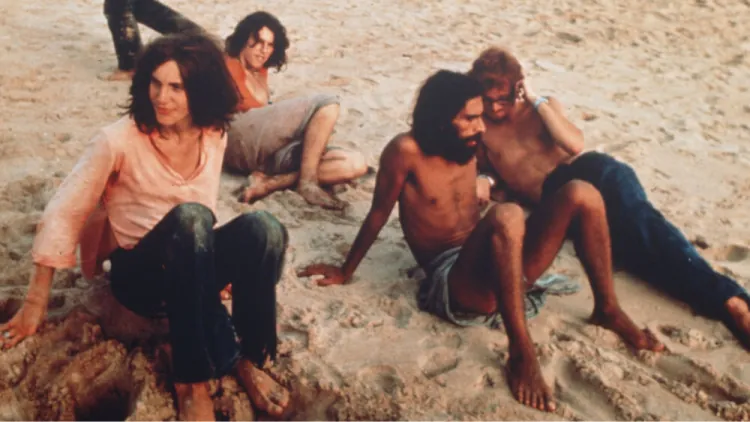The Hippie Trail: Enlightenment's Path & The Serpent's Prey
the allure of the Hippie Trail, a quest for spiritual awakening shadowed by serial killer Charles Sobhraj

-
Introduction
- The lure of the Hippie Trail in the quest for enlightenment.
- Brief mention of Charles Sobhraj, The Serpent, preying on travelers.
-
The Genesis of the Hippie Trail
- The origin with Oswald Joseph Garrow Fischer's Indiaman bus in 1957.
- Emergence of booking agents like Magic Bus and Tour East.
-
The Route of Discovery
- Tracing the trail from Europe to Asia, following the ancient Silk Road.
- Key cities and sites along the path.
-
Cultural Impact and Experiences
- The lifestyle of travelers: modes of travel, accommodations, and cultural hubs.
- Significant meeting points like The Pudding Shop in Istanbul and Freak Street in Kathmandu.
-
The Decline of the Trail
- Factors contributing to the end: political upheaval, the Iranian Revolution, and safety concerns.
- The chilling effect of Charles Sobhraj's crimes on the trail's popularity.
-
FAQs
- Address common queries about the Hippie Trail and its legacy.
-
Conclusion
- Reflect on the enduring fascination with the Hippie Trail and its place in cultural history.
- Invite readers to explore further insights and stories at Kiksee Magazine .
The Hippie Trail, a storied route from Europe to Asia, captivated thousands in the 1960s and 1970s, becoming a symbol of freedom, spiritual quest, and cultural exchange. This path, shadowed by the nefarious activities of Charles Sobhraj, known as The Serpent, represents a unique chapter in the history of travel and exploration.
Introduction
The allure of the unknown, combined with the desire for spiritual awakening, drew young Westerners to embark on an unparalleled journey known as the Hippie Trail. Amidst this backdrop of exploration and discovery, lurked Charles Sobhraj, a serial killer who preyed on unwary travelers seeking enlightenment.
The Genesis of the Hippie Trail
It began in 1957, when Oswald Joseph Garrow Fischer’s "Indiaman" bus embarked from London to Calcutta, heralding the advent of the Hippie Trail. This initiative sparked a wave of similar ventures, such as the "Magic Bus" in Amsterdam and "Tour East," offering affordable passages to the East, thus enabling a generation's quest for new horizons and experiences beyond the Western capitalist sphere.
The Route of Discovery
Mirroring the ancient Silk Road, the Hippie Trail stretched over 12,000 miles, weaving through Europe and Asia. Starting from vibrant cities like London and Amsterdam, travelers ventured through Istanbul, Tehran, and Kabul, among others, reaching as far as Goa, Bangkok, and even Australia. These routes, detailed in guidebooks like Lonely Planet’s "Across Asia on the Cheap," offered freedom-seekers a tapestry of cultures and landscapes.
Cultural Impact and Experiences
The journey was more than just a physical one; it was a cultural phenomenon. Travelers, either in organized bus tours or by hitchhiking, immersed themselves in local cultures, creating a fusion of Western and Eastern experiences. Iconic spots like "The Pudding Shop" in Istanbul and Freak Street in Kathmandu became landmarks of this cultural exchange, offering a glimpse into a world of coexistence and shared curiosity.
The Decline of the Trail
The trail's decline was precipitated by geopolitical shifts, including the Iranian Revolution and the Soviet invasion of Afghanistan, which heightened safety concerns and signaled the end of an era. Furthermore, the fear instilled by Charles Sobhraj, who exploited the trail’s openness to commit heinous crimes, cast a long shadow over its legacy.
FAQs
- What inspired the Hippie Trail?
- How did travelers navigate the Hippie Trail?
- What led to the decline of the Hippie Trail?
Conclusion
The Hippie Trail remains a fascinating chapter in the annals of travel, symbolizing a quest for enlightenment and the intermingling of diverse cultures. Though its physical journey has ended, the trail continues to inspire through stories and reflections on human connection and exploration. For more intriguing tales and insights, visit Kiksee Magazine.
In the end, the Hippie Trail's legacy, marked by the pursuit of spiritual enlightenment and the dark tales of The Serpent, offers a poignant reminder of the complexities of human nature and the enduring quest for understanding across cultures.
What's Your Reaction?






















